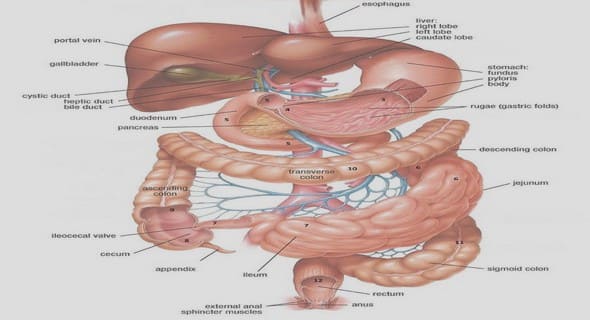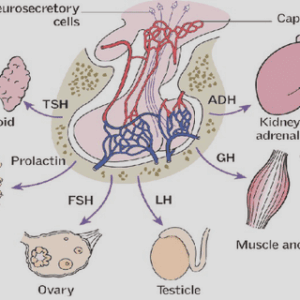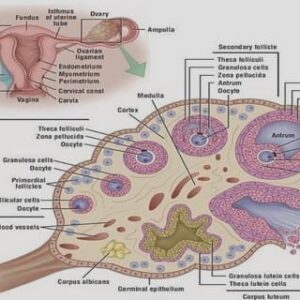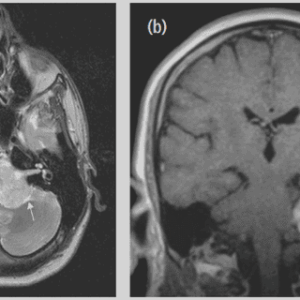(Downloads - 0)
For more info about our services contact : help@bestpfe.com
Table of contents
INTRODUCTION
1. INFLAMMATORY BOWEL DISEASES : AN INTRODUCTION
1.1. General description of IBD
1.2. Pathophysiology of Inflammatory Bowel Diseases
1.2.1. Genetic factors in IBD
1.2.2. Environmental factors in IBD
1.2.3. IBD and microbiota : a complex interplay
1.2.3.1. Healthy or normal gut microbiota
1.2.3.2. Role of the microbiota
1.2.3.3. Characterising the intestinal dysbiosis in Inflammatory Bowel Diseases
2. INTRODUCTION TO MICROBIOLOGY AND ITS RELATION TO THE HUMAN GUT ECOSYSTEM
2.1. The Quorum Sensing
2.1.1. Discovery and main characteristics of the Quorum Sensing
2.1.1.1. General mechanism(s) of the bacterial QS
2.1.1.2. The Quorum System of Vibrio fischeri : a paradigm for LuxI/LuxR-type quorum sensing systems
2.1.2. Overview of QS signaling molecules
2.1.2.1. Type-1 autoinducers (AI-1)
2.1.2.2. Type-2 autoinducers (AI-2)
2.1.2.3. Type 3 autoinducers (AI-3)
2.1.2.4. Other signaling molecules in Quorum Sensing
2.1.2.4.1. Cholerae autoinducer (CAI)
2.1.2.4.2. 3-hydroxy palmitic acid methyl ester (3OH-PAME)
2.1.2.4.3. The Pseudomonas Quinolone Signal (PQS)
2.1.2.4.4. The Diketopiperazines (DKP)
2.1.2.4.5. The g-butyrolactone
2.1.2.4.6. Auto-inducing peptides (AIP)
2.1.2.5. Summary table of presented QS molecules
2.1.3. Interspecies Communication and Signaling
2.2. Interkingdom Signaling : Effects of N-Acyl Homoserine Lactones on Eukaryotic cells
2.2.1. AHL penetration into cells
2.2.2. Apoptosis
2.2.3. Immunomodulatory effects and inflammation
2.2.3.1. 3oxoC12-HSL is a chemoattractant per se for neutrophils
2.2.3.2. AHL effects on immune cell functions
2.2.3.3. Inflammatory properties on epithelia
2.2.4. Morphological changes in cells
2.2.4.1. Tight and adherent junctions of the gut epithelium
2.2.4.2. Cell migration and wound healing
2.2.5. Quorum quenching
2.2.6. AHL receptors
2.3. State of the art in our laboratory
2.3.1. Are there AHLs in the intestinal ecosystem?
2.3.2. Objectives of the project
MATERIALS AND METHODS
1. EXPERIMENTAL PROCEDURES AND PROTOCOLS EMPLOYED IN BIOLOGY
1.1. Cell culture
1.1.1. The Caco-2/TC7 cell line
1.1.2. The Raw 264.7 cell line
1.1.3. The bacterial reporter strain E. coli pSB1075
1.1.4. Bactericidal assay
1.2. Evaluation of the biological activity of molecules in mammal cells
1.2.1. Caco-2/TC7 stimulation with cytokines
1.2.2. Raw 264.7 stimulation with LPS and IFN-g
1.2.3. Measurement of protein concentration in cell lysate
1.2.4. Human cytokines quantification by ELISA
1.2.5. Quantification of murine cytokines
1.2.6. Cytotoxicity assay
1.3. RNA extraction, Reverse transcription and Quantitative PCR
1.4. Biological activity of molecules on bacterial reporter strain E. coli pSB1075
1.5. Immunofluorescence experiments
1.5.1. Fixed-cells imaging
1.5.2. Live-cell imaging
1.6. Reactive Oxygen Species production in Caco-2/TC7 cells
1.7. Statistical analysis
2. MASS SPECTROMETRY : TANDEM LC/MS-MS
2.1. Evaluation of AHL half-life in cell culture medium at 20°C
2.2. Cell preparation for assessment of kinetics of AHL entry in cells
2.3. AHL detection by tandem HPLC-MS/MS
3. MATERIAL AND METHODS IN CHEMISTRY
3.1. Convention for atom numbering in N-acyl homoserine lactones and their analogues
3.2. Experimental procedures for synthesis and physicochemical characterization of natural AHLs,
intermediates and non-natural analogues
3.3. Synthetic procedures for the preparation of AHL probes
4. ANALYTICAL TECHNIQUES
4.1. Electrochemistry and cyclic voltammetry
4.2. Spectrometry
4.3. Molecule characterisation (NMR, MS and HRMS)
PART I : BIOLOGICAL STUDIES OF TWO NATURAL N-ACYL HOMOSERINE LACTONES
1. DESCRIPTION AND PREPARATION OF THE MOLECULES
1.1. The saturated 3oxoC12-HSL
1.2. The unsaturated 3oxoC12:2-HSL
2. COMPARED BIOLOGICAL EFFECTS AND PROPERTIES OF THE MOLECULES
2.1. Results on our biological models
2.1.1. Establishment of stimulation protocols
2.1.2. Natural AHLs can modulate the secretion of pro-inflammatory cytokines in Caco-2/TC7 and Raw 264.7 cell lines
2.1.2.1. Caco-2/TC7 and Raw 264.7 cells have different tolerances towards AHLs in range 1-100 μM
2.1.2.2. AHLs have a bi-modal action over IL-8 secretion by Caco-2/TC7 cells
2.1.2.3. Timing and chronology in AHL treatments
2.1.2.4. AHLs have mild effects on IL-6 secretion by Raw 264.7 cells
2.1.2.5. Other pro-inflammatory cytokines : IL-1ß and TNF-a
2.1.3. No mRNA modulation is observed in Caco-2/TC7 cells submitted to AHLs
2.1.4. AHLs and secretion of anti-inflammatory cytokines
2.1.5. AHLs and bacteria
2.1.6. Discussion
2.2. Stability & metabolism of AHLs
2.2.1. Degradation of AHLs in biological media
2.2.1.1. AHLs are degraded into two major by-products
2.2.1.2. pH-dependent stability in biological medium
2.2.1.3. Biological study of tetramic acid from the 3oxoC12-HSL
2.2.2. Enzymatic degradation and extracellular metabolism of AHLs
2.2.2.1. PON mRNA expression in the studied cell lines
2.2.2.2. Influence of the inhibition of Paraoxonases on AHL effects
2.2.3. Intracellular AHL metabolism : entry and cellular fate
2.2.4. Hydrolysed AHLs and bacteria
2.2.5. Discussion
2.3. Insight into the AHL mechanism of action : cell imaging and receptor investigation
2.3.1. Mapping AHLs in epithelial intestinal cells
2.3.1.1. Use of a commercially available fluorescent molecule
2.3.1.2. Development and evaluation of new molecules
2.3.1.2.1. Development of a clickable AHL
2.3.1.2.2. The nitrobenzofurazan: a smaller fluorescent probe
2.3.1.2.3. Design of potentially fixable naphthalimide-based fluorescent probes
2.3.1.3. Conclusions on cell-imaging
2.3.2. Design of a biotin-tagged AHL
2.4. AHL, Reactive oxygen species and iron
PART II : STRUCTURE ACTIVITY RELATIONSHIP STUDY & PHARMACOMODULATION
1. CONSTRUCTION OF A LIBRARY OF SYNTHETIC NATURAL AND NON-NATURAL COMPOUNDS
1.1. Natural N-Acyl-Homoserine Lactones
1.2. Introduction to AHLs non-natural analogues
2. STRUCTURE ACTIVITY RELATIONSHIP STUDY
2.1. Compared results on mammalian cell lines
2.1.1. Importance of the keto group
2.1.2. Importance of the acyl chain
2.1.2.1. Shorter acyl chains
2.1.2.2. Longer acyl chains
2.1.2.3. Discussion on acyl chain effects
2.1.3. Importance of the cyclic headgroup
2.1.3.1. Chirality and AHL activity
2.1.3.2. Thiolactones
2.1.3.3. The aminocyclohexanol series
2.1.3.4. Aromatic headgroups
2.1.3.4.1. The methoxy-anilide analogues
2.1.3.4.2. The amino-chlorophenol analogue
2.1.3.5. Miscellaneous : diverse compounds
2.1.4. Discussion on AHL modifications
2.2. Further investigation on two hit candidates
2.3. Development of a dimeric AHL
2.4. Results on bacteria strains
2.4.1. Results on LasR bioassay
2.4.1.1. Ketone effects
2.4.1.2. Influence of the acyl chain length
2.4.1.3. Substitution of the headgroup
2.4.2. Bactericidal properties of selected compounds
2.4.3. Investigation of inhibitors
2.4.4. Discussion on the bacterial properties of the analogue library
CONCLUSIONS & PERSPECTIVES
LIST OF FIGURES
LIST OF SCHEMES
LIST OF TABLES
REFERENCES
ANNEXES




